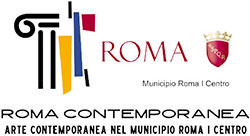Emanuele Malassisi is born a genius—an artist who grows and refines himself through the constant pursuit of technical perfection. He is clearly a lover of faces and figures, much like Van Gogh; and, like the great Dutch master, he shares a profound attachment to the natural world. Through his art, Emanuele seeks to communicate with others in a simple and direct way, using a language that is universally accessible and deeply human. Yet his instinct and intuition drive him toward a higher, more enigmatic realm—where, both unconsciously and consciously, he penetrates the mystery of life and death. The game he plays is refined and subtle.
There is no doubt that Malassisi, the man, walks a tightrope like a skilled acrobat, suspended between the tangible world and another dimension—a mirror, a refraction, a fragmentation of reality. It is precisely in this crossing of two existences that one begins to perceive the truth and sacredness of life in all its tangible and piercing mystery. The artist’s mind opens up, allowing invisible forces to touch our lives: thus occurs the enchantment of great art.
His love for Nature—and his obsessive search for it as the only pleasant and comforting certainty—animates the works of this magnificent artist. His forests seem to possess faces that slowly dissolve into a fluctuating identity; a swirl of air passes through another face, which becomes even stronger as it blurs. Identity withstands the assault of uncertainty and instability thanks to impeccable, steely discipline and method.
In his self-portrait, an empty chair is reflected in a puddle where, miraculously, the shadow of a seated man appears—his hands, the tireless instruments of creativity, rendered in detail. It recalls Van Gogh’s own confession of his enduring, tenacious love for life and art, despite the looming threat of madness. In German Expressionist cinema, shots of puddles or mirrors were often used to reveal hidden actions or concealed identities. Following this tradition, Emanuele—through his self-portrait—offers us the imprint of his being, the trace from which we can ascend to his deepest self.
The dialogue Malassisi weaves with death and the dissolution of the self as the protagonist and master of his own life is constant and defines his entire artistic journey. The skeleton gazing fixedly at a rose, as if in silent conversation with a beauty destined to fade, is a sublime example—a true memento mori rendered through masterful contemporary illustration.
The artist also manifests a deliberate desire for mimicry with the animal world: a woman transforms into a splendid peacock, another into a Dobermann, as if an alternate identity or totemic spirit sought to make its voice heard. It is no secret, to those privileged to know Malassisi, that he lives in perfect harmony with the animal kingdom. Today, the only authentic possibility of salvation for a sensitive soul—under siege by a cold and indifferent society—is to blend into nature, the dwelling place of our origins.
Emanuele cannot be understood or interpreted through a single work; each piece forms part of a greater visual narrative that bears witness to the power and energy of the whole. In this, he is a true illustrator. Every image is a magical fragment of an immense sacred mosaic. Indeed, one of his “illustrations” depicts a person whose shape and expression are unclear, composed of countless tiny tesserae. Within the artist resides a religious sense of life—a yearning for universal kinship among individuals, peoples, and cultures—an aspiration to build an endless gallery of faces within an imaginary and contemplative temple of faith in a better world.


